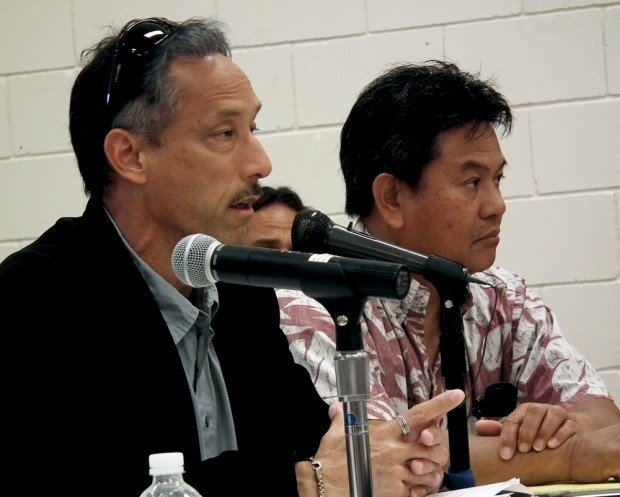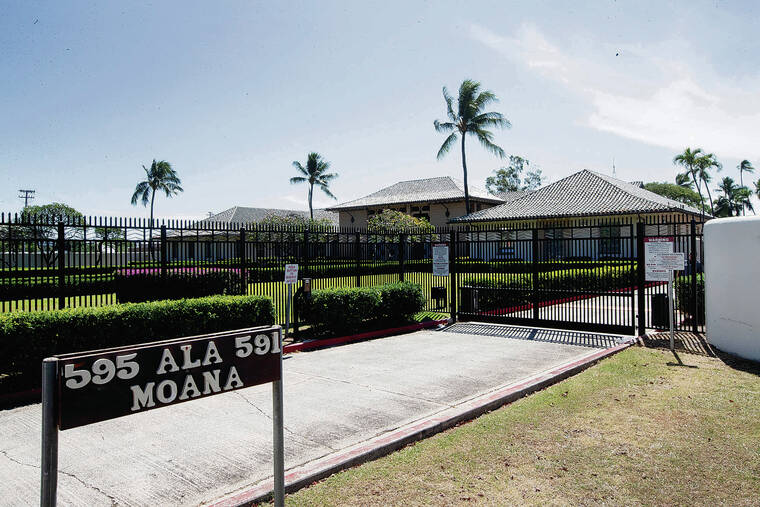NAWILIWILI — The Kaua‘i County Council’s review sessions for Mayor Bernard Carvalho Jr.’s proposed $146.29 million operating budget next year wrapped up Tuesday without much of the glamour of its opening day less than two weeks earlier. Frustration and a sense of non-accomplishment loomed among some council members.
“Today I think I spent two and a half hours of getting almost nothing,” Council Chair Kaipo Asing said at the end of the meeting.
The council had added an extra day of deliberations to discuss the two-day per month furloughs proposed by the Carvalho administration. But county Administrative Assistant Gary Heu couldn’t present the council with a completed furlough plan because both workers’ unions involved in the process haven’t reviewed it yet.
“If we’re not ready… what is the net result of this meeting?” asked Councilman Derek Kawakami, adding it seems premature to discuss the furloughs if the administration is saying it needs more time to come up with a plan.
Kawakami left during a recess an hour after the meeting started.
Heu said that on Oct. 14, 2009, the Hawai‘i Government Employees Association signed an agreement with the county, allowing for a monthly furlough of up to two days. On Feb. 2, 2010, it was the United Public Workers turn to sign a similar agreement.
SHOPO, the police officers’ union, and HFFA, the firefighters’ union, did not sign such an agreement.
The county sent a communication to all departments on Nov. 24, 2009, to begin planning for a potential furlough, according to Heu, who apologized to the Office of Prosecuting Attorney for forgetting to address them.
Heu said when complete, the furlough plan will most likely ask for two set days per month for about 75 percent of the county employees affected by the measure.
The remaining 25 percent will probably have to accommodate staggered furloughs, due to the nature of their work, he said. This group would include essential workers such as water safety officers, officer of prosecuting attorney employees, Waste Water Division employees and bus drivers, among others.
Heu said the plan will be sent to the unions soon, who will review it and negotiate with the county. A small percentage of county employees could be exempted or waived from the furlough, pending the outcome of the negotiations.
Deputy County Attorney Marc Guyot said the unions were given a choice between furloughs and pay cuts, and decided for the former.
A significant piece of information impacting Carvalho’s budget was still missing during the final session. The state Legislature hadn’t decided yet how much Kaua‘i County will receive from the Transient Accommodations Tax for Fiscal Year 2011, which starts July 1.
Last year Kaua‘i received roughly $12 million. This year, state lawmakers are still debating whether counties should receive a portion of this tax, which comes from visitor accommodations. The decision was supposed to be reached Tuesday night after press time.
Councilwoman Lani Kawahara was concerned that some federally grant-funded positions could be jeopardized because of the furlough. She asked Finance Director Wallace Rezentes Jr. if he knew which of those grants could be potentially affected, but he said he would need more information from specific departments.
Councilman Tim Bynum showed some frustration for not being able to address specific department heads who were not present.
A heated discussion between Bynum and Budget and Finance Committee Chair Daryl Kaneshiro ended up with the chair slamming the gavel and asking for a 10-minute recess.
“Why can’t we get the information on a piece of paper?” asked Kaneshiro. “Department heads cost us money; to bring them here to ask them those questions, it doesn’t make sense to me as budget chair.”
On April 9, the first day of the budget hearings, Bynum told Carvalho that he expected department heads to be present during the furlough hearing, scheduled for the last day of the budget review process. During Heu’s opening statement Tuesday, he said department heads were on call in case they were needed.
Heu brought along Rezentes, Guyot and Personnel Director Malcolm Fernandez. The only other department heads readily available on the floor were County Auditor Ernesto Pasion and Office of Prosecuting Attorney Shaylene Iseri-Carvalho.
Iseri-Carvalho left during the recess, visibly frustrated that the council did not follow the agenda the way it was printed. She was hoping to discuss the legality of the furlough, but couldn’t wait any longer due to her work schedule.
Her office is likely the county department with the highest percentage of federally funded positions. Iseri-Carvalho said because of shortages in her staff, a man suspected of stabbing someone was caught last week but could not be charged with the crime within 48 hours and had to be released.
Pressed for furlough alternatives, Heu told the council that the solution would be the “800-pound gorilla” sitting in the room, a reference to increasing property taxes to make up for the rest of the budget.
Kawahara said the furloughs would take $4.34 million out the local economy, which could bring a negative impact on the community.
She told the council that she thought the session was useful, because she learned that the administration does not have a completed furlough plan, that it recognizes that retirements may increase, and that the impact of the furloughs in the local economy was not taken into consideration.
Bynum said the University of California, Berkeley says that furloughs are a particularly innefective way of saving money, usually saving about 37 cents on the dollar.
Asing said the council is stuck until the Legislature decides to take away an expected $6 million in TAT revenues from the county’s funding. In case that happens, Asing told Heu he “better be prepared to work.”
• Visit www.thegardenisland.com for videos of the budget meetings.





